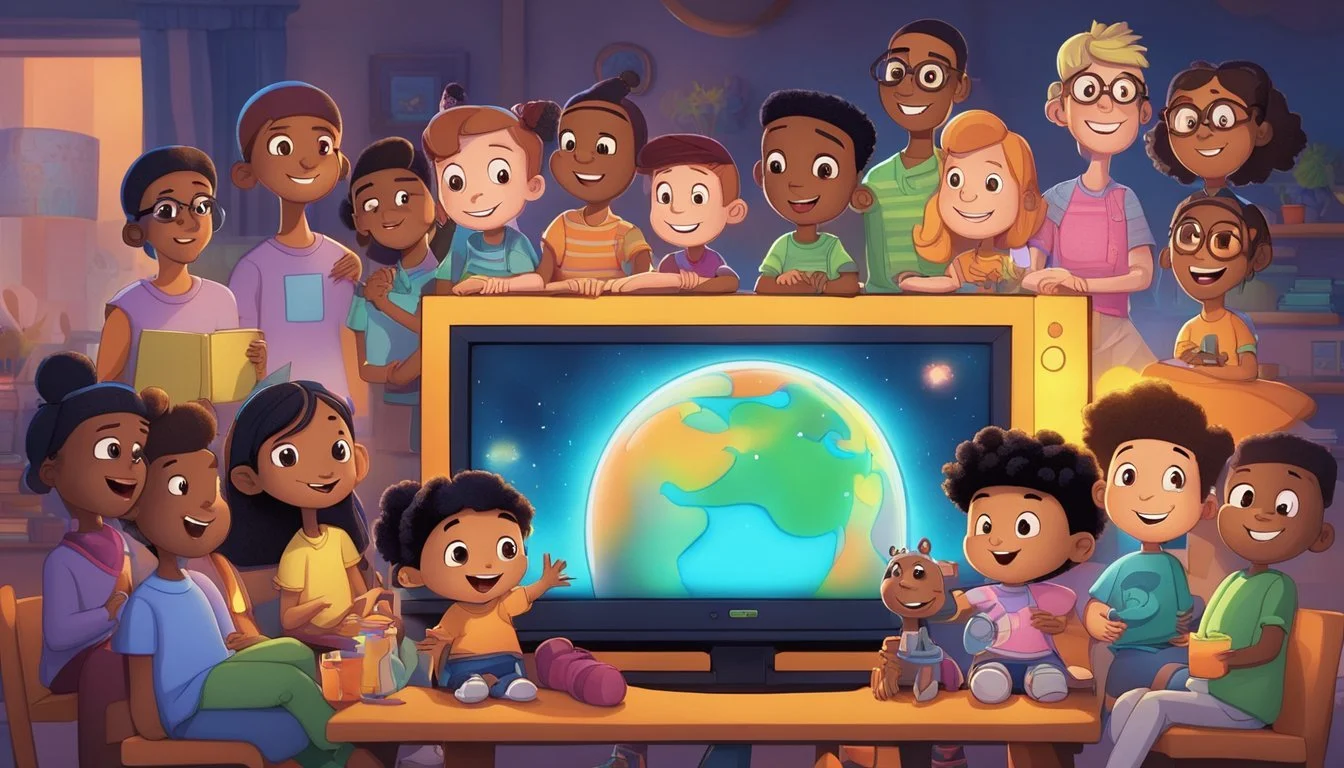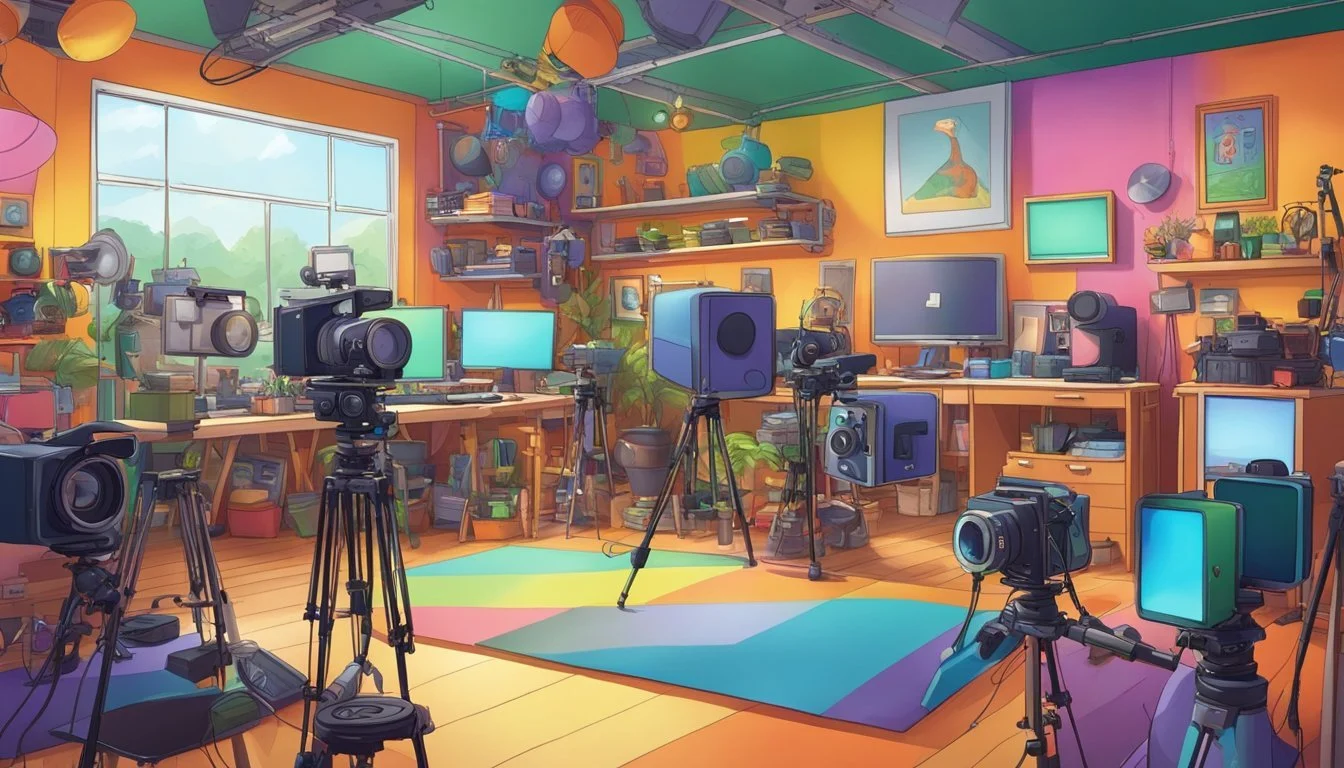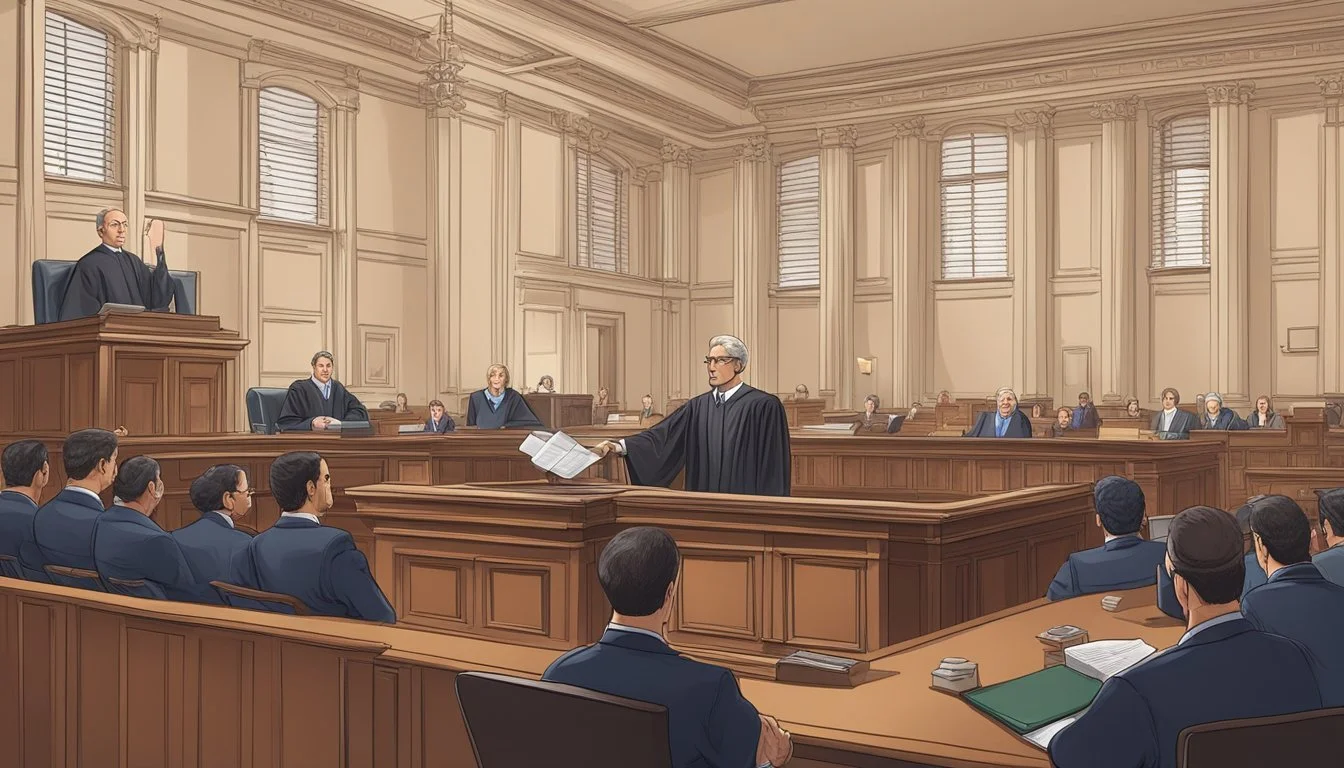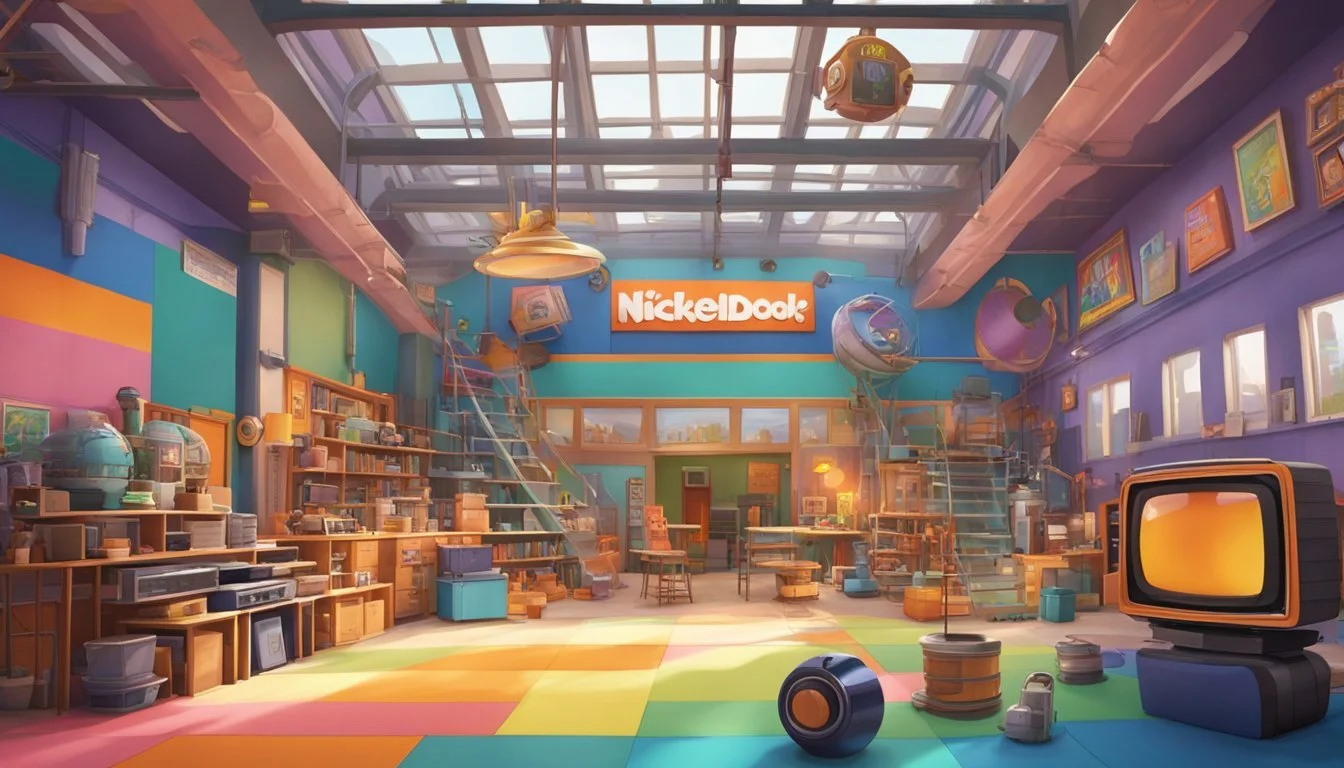Nickelodeon's Dark Secret: Child Stars Speak Out in Shocking 2024 Exposé
The 2024 Nickelodeon documentary "Quiet on Set: The Dark Side of Kids TV" has sparked intense discussion about the behind-the-scenes culture of children's television. This five-part series examines the working conditions for child actors and adult staff on popular Nickelodeon shows during the 1990s and 2000s. It sheds light on allegations of toxic behavior, inappropriate conduct, and abuse within the network, particularly focusing on producer Dan Schneider's tenure.
The documentary features interviews with former Nickelodeon stars, including Drake Bell, and explores the lasting impact of their experiences. It has prompted public responses from those involved, including Schneider himself, who acknowledged the need for changes in how he treated people. The series aired on Investigation Discovery in March 2024, drawing significant attention to issues previously hidden from public view.
"Quiet on Set" raises important questions about child safety, workplace ethics, and the responsibilities of entertainment companies. Its revelations have led to broader conversations about protecting young performers and ensuring healthier environments in the entertainment industry. The documentary serves as a sobering look at the potential dark side of beloved childhood programming.
The Evolution of Nickelodeon
Nickelodeon transformed from a small cable channel to a global kids' entertainment powerhouse. Its journey spans decades of innovative programming and cultural impact.
Early Beginnings and Rise to Popularity
Nickelodeon launched in 1979 as the first cable channel for children. Initially, it struggled to find its footing in the television landscape.
The network's fortunes changed in the 1980s with the introduction of original programming. Shows like "You Can't Do That on Television" helped establish Nickelodeon's signature green slime.
By the 1990s, Nickelodeon had become a dominant force in children's television. The network expanded its offerings with animated series like "Rugrats" and "The Ren & Stimpy Show."
Live-action comedies also gained traction. "All That" launched in 1994, becoming a springboard for young talent and spawning spin-offs like "The Amanda Show."
Signature Series and Shows
The early 2000s marked a golden era for Nickelodeon's live-action programming. "Zoey 101" and "iCarly" became cultural phenomena, attracting millions of viewers.
These shows launched the careers of several young stars. Ariana Grande got her start on "Victorious" before becoming a global pop sensation.
Nickelodeon continued to innovate with animated hits. "SpongeBob SquarePants" debuted in 1999 and quickly became the network's most successful property.
The network also expanded into movies and theme park attractions. Its influence extended beyond television, shaping a generation of young viewers.
Exploring the Documentary Genre
Documentaries have evolved significantly in recent years, embracing new formats and distribution methods. The rise of docuseries and streaming platforms has transformed how audiences consume and engage with non-fiction content.
Defining the Docuseries
A docuseries is a multi-episode documentary that explores a single topic or theme in depth. This format allows for more comprehensive storytelling and deeper audience engagement. Docuseries often blend investigative journalism, personal narratives, and archival footage to create compelling narratives.
Popular streaming platforms have embraced the docuseries format, producing original content that captivates viewers. These series often tackle complex subjects, from true crime to social issues, providing audiences with immersive, long-form storytelling experiences.
The Rise of Streaming Platforms
Streaming platforms have revolutionized the distribution and consumption of documentaries. Services like Netflix, Hulu, and Amazon Prime Video have invested heavily in non-fiction content, making documentaries more accessible than ever before.
This shift has led to increased production of high-quality documentaries and docuseries. Streaming platforms offer filmmakers greater creative freedom and the ability to reach global audiences instantly. The on-demand nature of streaming allows viewers to engage with documentaries at their own pace, fostering deeper connections with the content.
The rise of streaming has also enabled niche documentaries to find their audiences, catering to specific interests and communities. This democratization of content has expanded the diversity of voices and perspectives in the documentary landscape.
The Cultural Impact of Kids' TV
Kids' television shows have shaped generations and left an indelible mark on popular culture. These programs have influenced children's behavior, language, and social norms while also serving as a launching pad for young talent in the entertainment industry.
Influence on Generations
Kids' TV shows have significantly impacted the way children interact and view the world. Popular series like "Sesame Street" and "Mister Rogers' Neighborhood" taught valuable life lessons and social skills. These programs often introduced complex topics in accessible ways, helping children understand diversity, empathy, and problem-solving.
Many catchphrases and characters from children's TV have become cultural touchstones. Shows like "SpongeBob SquarePants" and "Dora the Explorer" created memorable quotes and scenes that persist in memes and everyday conversation.
The fashion and merchandise associated with kids' TV have also influenced trends. Character-themed clothing, toys, and school supplies became status symbols for children, driving consumer habits from a young age.
Children's TV and Hollywood
Kids' television has served as a breeding ground for future Hollywood stars. Many actors who started in children's programming went on to successful careers in film and television. Notable examples include Ryan Gosling, who began on "The Mickey Mouse Club," and Ariana Grande from "Victorious."
The industry has faced scrutiny regarding the treatment of child actors. Recent documentaries like "Quiet on Set: The Dark Side of Kids TV" have shed light on alleged toxic work environments and exploitation in children's television production.
These revelations have sparked discussions about child labor laws in entertainment and the need for better protections for young performers. The industry is now grappling with how to balance the creation of engaging content with the well-being of its youngest stars.
Behind The Scenes of Nickelodeon
The inner workings of Nickelodeon during its golden age revealed a complex environment. Child actors and adult staff faced unique challenges and experiences that shaped the production of iconic shows.
The Work Environment
Nickelodeon's behind-the-scenes atmosphere was far from the lighthearted content it produced. Child actors often worked long hours under intense pressure. Some former stars reported feeling overwhelmed and unsupported.
Adult staff members, including writers and production assistants, operated in a fast-paced setting. The demanding nature of creating children's television led to high stress levels for many employees.
Workplace dynamics were complicated by power imbalances between young actors and adult supervisors. This created opportunities for potential exploitation and misconduct.
Production Challenges
Creating hit children's shows posed numerous obstacles for Nickelodeon's production teams. Writers faced the task of crafting scripts that appealed to young audiences while meeting tight deadlines.
Production assistants juggled multiple responsibilities, from coordinating schedules to managing on-set needs. Their roles often involved direct interaction with child actors, requiring careful oversight.
Technical limitations and budget constraints added to the difficulties. Teams had to innovate to bring imaginative concepts to life within practical bounds.
Balancing child labor laws with production demands proved challenging. Producers had to navigate strict regulations while maintaining a productive shooting schedule.
Uncovering the Dark Side
The documentary "Quiet on Set: The Dark Side of Kids TV" exposed troubling allegations and controversies surrounding popular children's television shows from the 1990s and 2000s. It shed light on high-profile cases of misconduct and abuse within the industry.
Allegations and Controversies
"Quiet on Set" revealed a toxic work culture behind the scenes of beloved Nickelodeon shows. The documentary focused on allegations against producer Dan Schneider, who created numerous hit series for the network.
Former child actors described inappropriate conduct and exploitation on set. Some reported feeling pressured to perform questionable scenes or stunts. Others claimed they experienced emotional abuse from adults in positions of authority.
The series also highlighted concerns about long working hours and inadequate protections for young performers. It suggested that some parents and guardians failed to safeguard their children properly in the high-pressure entertainment environment.
High-Profile Cases
The documentary brought renewed attention to convicted sex offender Brian Peck, who worked on Nickelodeon shows. Peck was arrested in 2003 and later pleaded no contest to lewd acts with a child.
Former "Drake & Bell" star Drake Bell spoke publicly about his experiences of sexual abuse in the industry. His testimony added a powerful voice to the allegations of misconduct.
The series examined Nickelodeon's eventual split from Dan Schneider in 2018 amid reports of verbal abuse and questionable behavior. It questioned why the network continued working with Schneider for years despite apparent red flags.
The Legal and Ethical Consequences
The Nickelodeon documentary exposed serious allegations of misconduct, leading to investigations and renewed advocacy efforts. These revelations had wide-ranging implications for the children's entertainment industry.
Investigations and Findings
Multiple investigations were launched in response to the claims made in the documentary. Regulatory bodies examined Nickelodeon's compliance with child labor laws and workplace safety regulations.
Internal reviews at Nickelodeon and parent company Viacom scrutinized past practices and current policies. Some former executives faced questioning about their knowledge of alleged abuses.
Law enforcement agencies opened criminal inquiries into specific allegations of sexual misconduct and child exploitation. Several individuals named in the documentary became subjects of police investigations.
Support and Advocacy
The documentary sparked a wave of support for former child actors. Many received messages of solidarity from fans and fellow performers.
Advocacy groups focused on child welfare in entertainment redoubled their efforts. They pushed for stronger protections and oversight in children's programming.
Some industry veterans established mentorship programs and support networks for young performers. These initiatives aimed to provide guidance and a safe space for reporting concerns.
Legislators proposed new regulations to safeguard child actors. Key measures included mandating on-set counselors and stricter limits on working hours.
The Personal Stories
Former child stars of Nickelodeon shared shocking experiences from their time on popular shows. Their accounts revealed a darker side to the seemingly cheerful world of kids' television.
Child Actors' Experiences
Amanda Bynes rose to fame on Nickelodeon shows like "All That" and "The Amanda Show." She later struggled with mental health issues and substance abuse in adulthood.
Drake Bell, star of "Drake & Josh," disclosed sexual abuse by his vocal coach Brian Peck during his time at Nickelodeon. This revelation came in the 2024 documentary "Quiet on Set: The Dark Side of Kids TV."
Ariana Grande, who appeared on "Victorious," has spoken about the pressures of balancing schoolwork with long hours on set. She described feeling exhausted and overwhelmed at times.
Where Are They Now?
Many former Nickelodeon stars have pursued diverse paths since their child acting days. Some continued in entertainment, while others chose different careers.
Amanda Bynes stepped back from acting and studied fashion design. She has faced legal troubles and mental health challenges in recent years.
Drake Bell continued acting and music but encountered legal issues. He has been open about his struggles with substance abuse and mental health.
Ariana Grande became a global pop superstar, achieving numerous chart-topping hits and Grammy awards. She has also advocated for mental health awareness.
Some former child actors have spoken out about their experiences, contributing to discussions about child welfare in the entertainment industry.
Reflections and Looking Forward
The Nickelodeon documentary released in 2024 sparked important conversations about child safety in entertainment. It prompted industry-wide introspection and calls for reform.
Lessons Learned
The documentary exposed serious issues in children's television production. It highlighted the need for stronger safeguards to protect young actors.
Many former child stars shared their experiences, shedding light on previously hidden problems. Their accounts emphasized the importance of providing support systems for young performers.
The revelations about Dan Schneider's behavior led to discussions about power dynamics in the industry. It became clear that more oversight is needed to prevent exploitation.
The documentary also revealed gaps in reporting mechanisms for misconduct. This prompted calls for improved channels for young actors to voice concerns safely.
Evolving Children's Media
The 2024 documentary catalyzed changes in children's media production. Studios implemented stricter policies to ensure safe working environments for minors.
New industry guidelines emerged, focusing on limited work hours and mandatory breaks for child actors. On-set counselors and advocates became more common to support young performers.
Content creation shifted towards more age-appropriate material. Producers became more mindful of avoiding sexualized content involving minors.
The push for unscripted content increased, reducing pressure on child actors to memorize lines. This approach aimed to create a more natural and less stressful environment for young performers.
Increased parental involvement on sets became standard practice. This helped ensure proper supervision and advocacy for child actors.






